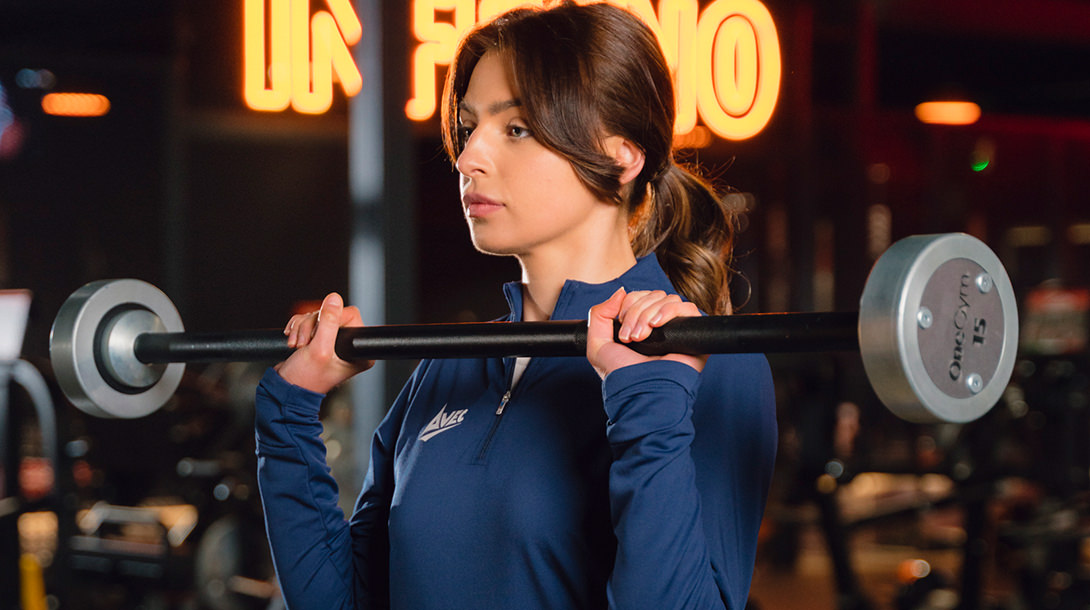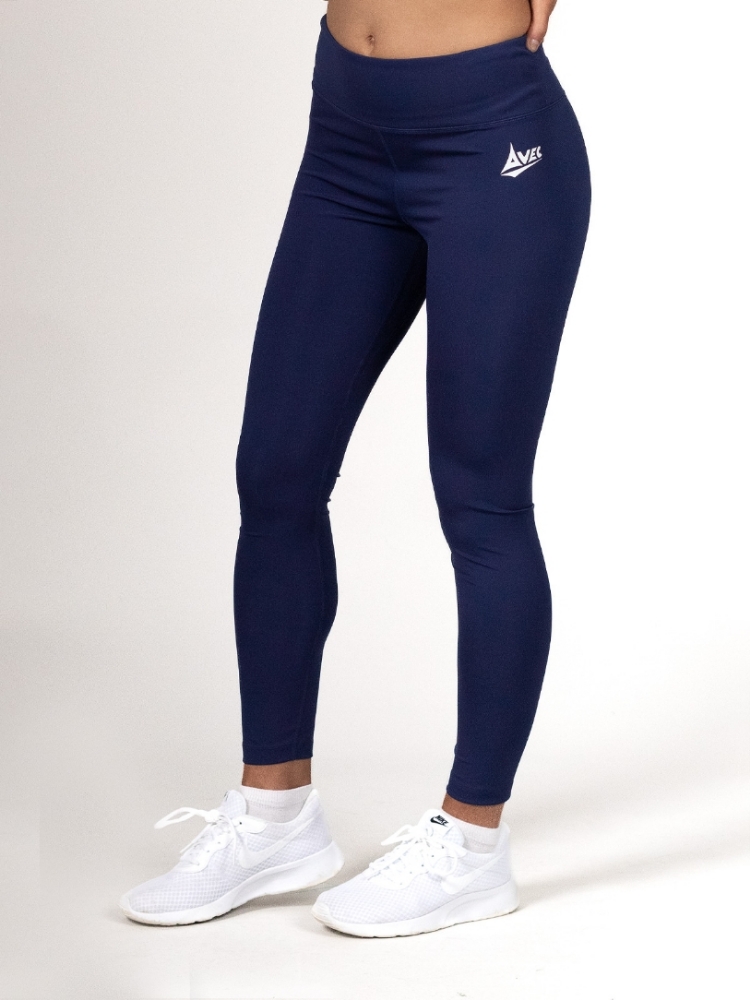
A beginner’s guide to weight training for women
When it comes to attending the gym or starting an exercise regime, many women tend to shy away from muscle-building exercises in favour of cardio-based training. However, strength training is one of the most beneficial types of exercise to improve overall health and fitness levels, and should never be overlooked when embarking on a fitness journey.
There are plenty of misconceptions, questions, and little-known facts about muscle building for women, but if you’re looking to make a change in your fitness, this could be the perfect place to start. Keep reading as we discuss the ins and outs of strength training and women’s weights so that you can incorporate functional fitness into your regime.
What is strength training?
Strength training improves your muscles by making them work against a force. This could be in the form of weight lifting, suspension equipment, or using your body weight. This type of training is also known as resistance training and is considered to be a form of anaerobic exercise. Anaerobic exercises are short, high-intensity forms of training that don’t use oxygen in the way that aerobic exercise does. However, whilst strength training is designed to build your muscles, there is a misconception that this form of exercise is only for those who want to ‘bulk up’. In fact, strength training is a key component of your overall fitness as this helps to slow down the natural degradation of your muscles as you age, and can help you to lose fat and reduce the risk of injury.
What are the differences in strength training for women and men?
Despite popular belief, there should be no major differences in strength training for men and women. The process is the same for everyone, just with different weight limits depending on individual ability. Typically, differences may be seen in the types of exercises undertaken as the generalised view shows that men tend to target their upper body more than their lower body, and women tend to do the opposite. Ideally, both genders should aim to incorporate an equal balance into their routine to maximise the benefits of strength training and improve overall full-body fitness levels.
There may be some minor differences in factors such as nutritional needs and muscle mass gains which are dependent on individual body composition, but a qualified nutritionist or personal trainer will be able to advise you on this if it is an area of concern when developing a strength training programme.
What are the benefits of muscle building for women?
Strength training has plenty of benefits aside from building muscle. Female weight lifters often see improvements in many other areas, especially when combined with other exercise types. These benefits are not restricted to seeing visible results in your physique, but also in your day-to-day life and mental wellbeing. Some of the notable benefits that you may start to see are:
- Improved fat loss
- Increased bone and heart health
- Reduced risk of injury
- Improvement of energy levels
- Better sleep quality
- Increased confidence levels
- Stress relief
- Improved posture
- Improved muscle endurance & pain alleviation associated with chronic illnesses
Strength training routine for women
If you’re looking to get into strength training, there are several exercises that you can do from the comfort of your own home to get started. However, to see the best results we highly recommend that you work with a personal trainer or attend a gym class. This is because a qualified instructor will be able to push you to achieve your goals, but will be able to tell what your limitations are and help you to avoid overloading your weights. They can also show you the correct techniques and posture when using machines or doing bodyweight exercises. It is advised that you strength train at least twice a week for 30 minutes each time. You can increase the duration of the workout or the number of workouts you do to suit your fitness level, but it is important that you have rest days to allow your muscles to recover.
We understand that setting foot in a gym, let alone in the weights section can be intimidating for beginners. Therefore, if you’d like to start your fitness journey at home there are a few recommended exercises that you can try without the need of specialist machines or equipment. We would recommend watching an online tutorial to make sure that you are performing the exercises correctly.
Lower body strength exercises
Squats are a simple exercise that you can do at home, and many people will already know the correct form. Once you’ve warmed up and you’re ready to begin your strength training, start by doing a set of 15 reps. If this is too easy, you can either increase the number of reps in a set, add a free weight such as a kettlebell, or vary the exercise by doing lunge squats. This will help to build strength in your legs and glutes as well as engage your core.
Alternatively, you can choose to incorporate single-leg raises. By starting on all fours, raise one leg and straighten it behind you before bringing it back down to the starting position and repeating. You can do this for 30-45 seconds on each leg before moving on. You can also alternate the exercise by raising your leg to the side instead of behind you. These exercises will provide the most benefit when used with a resistance band.
Upper body strength exercises
There are plenty of upper body and core exercises that you can do without gym equipment. This includes working your abs by doing situps and crunches, ankle taps, planks and push-ups, or Russian twists if you have weights available. Remember to start these off light, it’s not always about how many reps you can do, but rather achieving the correct form. Once you have mastered the technique you can start to incorporate more advanced exercises into your routine or increase the number of sets.
To work your upper body exercises such as bicep curls and hammer curls are a great choice. You are more likely to see benefits in your upper body when using weights rather than relying solely on body weight exercises. If you don’t have any to hand, try using filled bottles to add some resistance. The bottles can be filled with any material such as water, dried grains, or coins to adjust the weight according to your needs.
What should I wear when strength training?
Strength training can be intense and make you work up a sweat, therefore the right sportswear is key. Body fit or muscle compression clothing can also help you perform better by increasing blood flow to the muscles you are targeting. But above all, it’s important that your clothing is comfortable and flexible to accommodate a range of movements. We recommend opting for a pair of leggings such as the navy tech leggings which feature a mid-waist band to support your core and are made from breathable materials to keep you cool. They also offer plenty of stretch, so you’ll be able to maintain a comfortable fit when performing exercises such as squats or lunges.

To complement this, we would suggest the tech overlay in black. Whilst strength training can make you work up a sweat, it may not come as quickly as an intense cardio session, so this full-length top can help your muscles warm up, and it can be adjusted using the ¼ length zip if you get too hot. This level of customisable ventilation will be a welcome addition midway through your training regime.
_1000.jpeg)
Women’s tech overlay in black £22.95
Start your strength training regime with Avec Sport
Owning the right activewear is the first step to achieving great results. Our collection of women’s fitness clothing provides several highly functional and stylish pieces to help you perform at your best, and our athleisure collection is ideal for women on the go. Browse through these ranges to find the perfect pieces for you, and start your muscle-building journey with Avec Sport.

